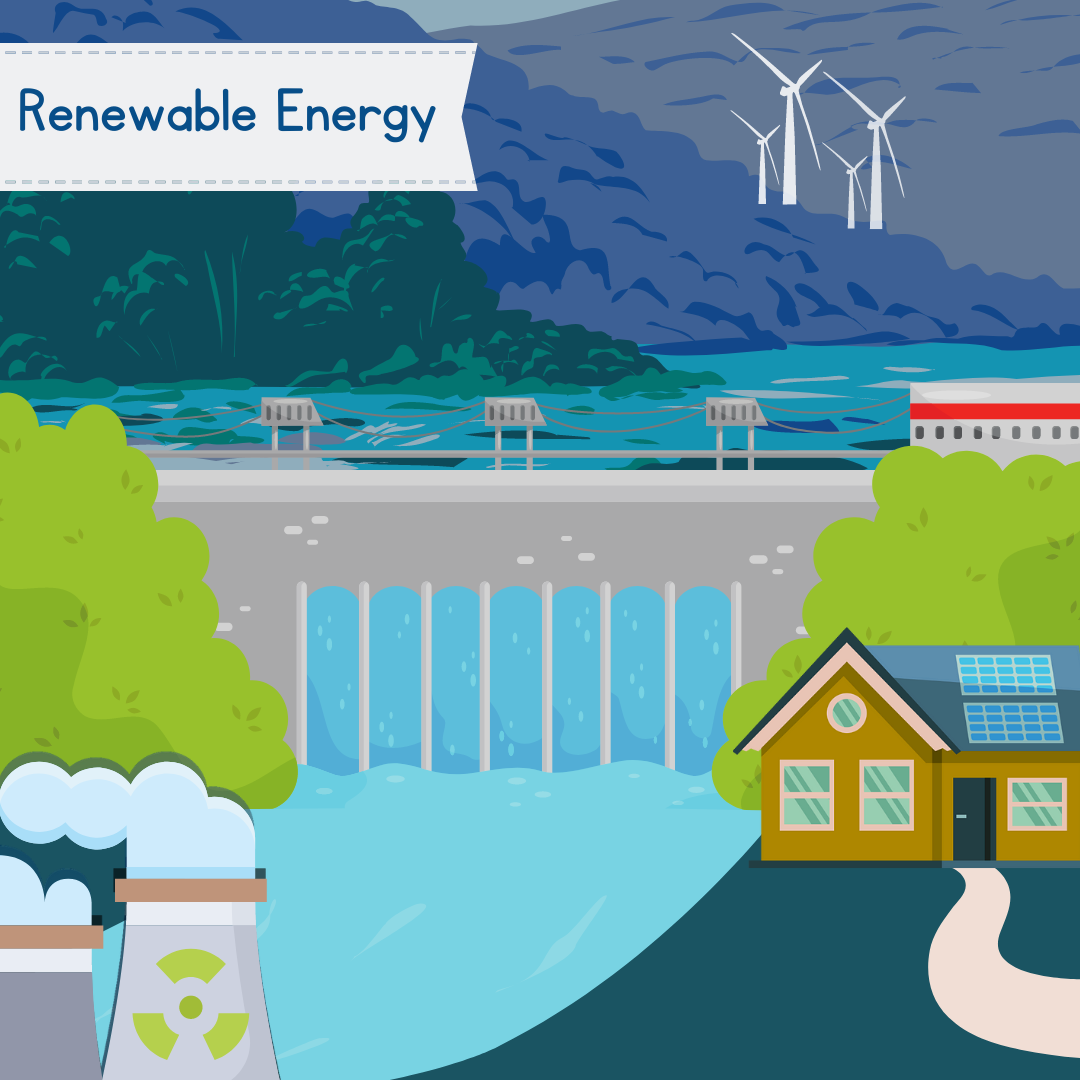
Innovation in Energy
Energy is an essential property that contributes to the processes that occur around us everyday. It takes energy for a butterfly’s wings to flap. It takes energy for a car to drive down the road. It takes energy for us to breathe, walk, and talk. Energy flows through everything. In another sense of the word, energy can be the property that allows technology that is used today, to work. Things such as automotives, lights, televisions, and more are all technology that requires a form of energy. Yes, there are different types of energies! This article will focus on the energy that we as humans use. This type of energy typically can come from the movement of air and water, heat from both the sun and the earth, as well as chemical fuels. The two overarching types of energy that humans harness are non-renewable and renewable energy.
Non-renewable energy is energy that can not be renewed within the present day human lifetime. Fossil fuels and nuclear energy are both non-renewable energies because they cannot be replenished in enough time to be sustainable for future generations. This means that these sources of energy restore themselves much slower than they are depleted. For instance fossil fuels are made of plant and other biotic matter that have been buried and pressurized by sediments over millions of years. This is a great timescale for an energy source to be made and not necessarily renewable within the human lifetime.
On the other hand, renewable energy can be replenished over a human lifetime. According to the Office of Energy Efficiency and Renewable Energy, this type of energy typically comes from natural sources that do not dissipate, but rather can be replenished quickly. Examples of renewable energy include sources such as the sun, water, and wind as these are all processes that can be restored in a human lifetime. Let’s look at where renewable energies come from and how they are used throughout the world and in your community.
SOLAR ENERGY
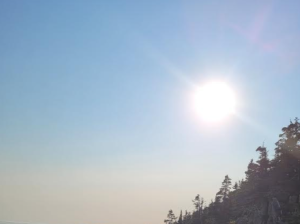 The sun provides a lot of the energy for the earth. For instance, plants and some cyanobacteria use solar energy to photosynthesize and sustain life for other organisms on the planet. Solar energy is used by collecting and converting radiation from the sun often in the form of solar panels or photovoltaic panels. Solar panels absorb incoming radiation from the sun and convert that energy for electricity as needed. They can be mounted on the roofs of houses, but are more typically built on the ground as “solar farms” in larger fielded areas where they provide electricity for a whole community.
The sun provides a lot of the energy for the earth. For instance, plants and some cyanobacteria use solar energy to photosynthesize and sustain life for other organisms on the planet. Solar energy is used by collecting and converting radiation from the sun often in the form of solar panels or photovoltaic panels. Solar panels absorb incoming radiation from the sun and convert that energy for electricity as needed. They can be mounted on the roofs of houses, but are more typically built on the ground as “solar farms” in larger fielded areas where they provide electricity for a whole community.
Globally, China, the United States, and India respectively are the largest generators of solar power as presented in an article from Our World Data. According to the article, as of 2021, China generated about 327 TWh (terawatts) in solar energy while the United States produced 164.42 TWh, and India generated around 68.31 TWh. While the United States is a large contributor of solar power generation, the country only makes up 12% of energy used according to the U.S. Energy Information Administration (EIA). A little bit of a fun fact about solar energy is that the first solar cell that would later make up solar panels was created in 1883. Since then, a lot of research has gone into how to store and make solar energy efficient for electrical and heating purposes. For more history on solar energy and panels you can check out this article from the Smithsonian Magazine.
Not only is solar energy a renewable energy, but it also has many different applications. It can be used not just in your homes, but in commercial buildings such as business, your town hall, shopping centers, and much more. They are also relatively easy to clean and maintain. Of course just because it is a renewable energy does not mean that there are not some downsides to this form of energy either. Solar panels can be expensive, especially depending on where you put them and how many you want. They also depend on weather conditions. Solar panels need sunlight in order to work as they capture solar radiation to provide you energy. Areas where it is always cloudy, rainy, or snowy might not be the best for this type of energy. Green Match discusses more about the advantages and disadvantages of solar energy, but do not let the downsides steer you away. The more we learn and research about solar energy, the better our understanding becomes, allowing for the technology to improve.
The University of Maine’s students and faculty are working on many research projects involving solar energy through engineering, economics, and policy. Dr. Liping Yu, is a physics professor within the Physics and Astronomy department who has worked on the design of and materials used for photovoltaic cells. Dr. Sharon Klein is a professor in the School of Economics at the University of Maine. Her area of research encompasses the human use of energy from the lens of economics as well as policy. You can check out both of their websites for more of the work that they are currently doing! There is also The Solar Thermal Energy Laboratory that is under the direction of Justin Lapp. This lab is interested in understanding how solar energy can not only be obtained in different ways but also for how it can be used within our society and everyday lives.
HYDRO POWER
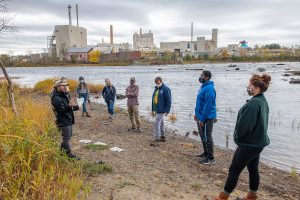 The earth has a lot of water. About 71% of the Earth is covered in water, 96.5% of that is held within the Earth’s oceans. Hydropower is a type of renewable energy that uses flowing water to create electricity. Dams are often built to produce electricity by using the movement of water. Turbines and generators transform the kinetic energy into electricity that can be used for homes, factories, heavy industry, and other commercial properties. The Office of Energy Efficiency and Renewable Energy says that “Hydropower currently accounts for 31.5% of total U.S. renewable electricity generation and about 6.3% of total U.S. electricity generation.”
The earth has a lot of water. About 71% of the Earth is covered in water, 96.5% of that is held within the Earth’s oceans. Hydropower is a type of renewable energy that uses flowing water to create electricity. Dams are often built to produce electricity by using the movement of water. Turbines and generators transform the kinetic energy into electricity that can be used for homes, factories, heavy industry, and other commercial properties. The Office of Energy Efficiency and Renewable Energy says that “Hydropower currently accounts for 31.5% of total U.S. renewable electricity generation and about 6.3% of total U.S. electricity generation.”
Hydropower has a multitude of benefits as an energy source. Of course it is a renewable source because water is sustainable and can be renewed within a human lifetime. It is also a clean renewable energy as Conserve Energy Future states that, “The energy produced by hydroelectric plants do not produce any toxic or greenhouse gasses that pollute the atmosphere”. Hydropower can also last a long time. There are multitudes of dams all over the world and humans have been constructing them for centuries. They are still being constructed today for the use of electricity and according to Our World Data, China produces the most energy from hydroelectric power, producing about 1,300 TWh in 2021.
Hydroelectric power is not perfect though, despite being a renewable energy source. The construction of dams can be expensive. Dams can also cover a whole area of land with water which can affect many different populations such as migrating birds and fish species as stated in an article from Environmental Science. Why build dams if they pose a threat to the environment? For a dam to be built, particularly in Maine, certain laws and regulations have to be followed. Dams have to be maintained over time, they can’t be abandoned, the water levels within and outside of the dam are regulated. The Maine Department of Environmental Production provides more information on hydropower and dams.
Although dams are the leading source of hydropower today, scientists around the world are inventing new ways to harness energy from water. More specifically they are now looking towards the ocean. Tides and waves have kinetic energy as well and their could be a possibility that this energy could be used for renewable energy production. Here at the University of Maine, Gayle Zydlewski and Teresa Johnson are researching how people could use tides to generate power. The article, Renewable Energy from the Tides, gives an overview of their project. Based on the article, the basic idea of their project is the use of underwater turbines that are driven by the power of waves to create energy for human use. A lot goes into this research, not only the construction of the turbines, but also understanding how this may affect the economy but most importantly marine ecosystems. It is truly amazing to learn and hear about what the University’s professors and students are innovating.
WIND ENERGY
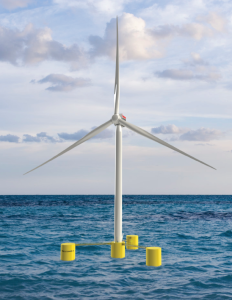 Wind is another renewable resource that we can use to generate electricity. The most common way is through the use of wind turbines. You might see these dotting the hills and coasts of Maine, where the presence of wind is in higher abundance. This type of energy source works similar to hydroelectric power, in that it uses the kinetic energy of wind and transforms that into electricity through a system of blades, gears and generators. The Office of Energy Efficiency and Renewable Energy explains that the energy provided by wind “can be used for specific tasks (such as grinding grain or pumping water) or a generator can convert this mechanical power into electricity”. Although today wind energy is typically used to provide electricity to communities, it was once also used in agriculture to grind grain in order to produce things such as flour. Today China and the United States generate the most electricity via wind energy. According to Our World Data China generated about 655 TWh and the United States generated about 378 TWh of electricity through wind energy in 2021. Although these two countries generate the most electricity from wind energy presently, this renewable energy source is becoming increasingly popular around the world.
Wind is another renewable resource that we can use to generate electricity. The most common way is through the use of wind turbines. You might see these dotting the hills and coasts of Maine, where the presence of wind is in higher abundance. This type of energy source works similar to hydroelectric power, in that it uses the kinetic energy of wind and transforms that into electricity through a system of blades, gears and generators. The Office of Energy Efficiency and Renewable Energy explains that the energy provided by wind “can be used for specific tasks (such as grinding grain or pumping water) or a generator can convert this mechanical power into electricity”. Although today wind energy is typically used to provide electricity to communities, it was once also used in agriculture to grind grain in order to produce things such as flour. Today China and the United States generate the most electricity via wind energy. According to Our World Data China generated about 655 TWh and the United States generated about 378 TWh of electricity through wind energy in 2021. Although these two countries generate the most electricity from wind energy presently, this renewable energy source is becoming increasingly popular around the world.
One of the many benefits of wind energy is that it is renewable over long periods of time. Wind is driven by uneven heating as well as the rotation of earth. Another benefit of wind energy is that turbines can be built in many different locations as long as the amount of wind is in high abundance. Like any other renewable energy source, wind energy of course does have its own downsides. For instance aesthetically, wind turbines can impact the natural beauty of a landscape nor are they quiet either. The initial cost of construction of wind turbines is also relatively expensive, but they can also last for a long period of time.
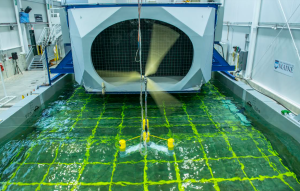 The University of Maine is doing a lot of research in this renewable energy field. The offshore wind program is one of the many research projects at the University. This program is working to harness wind energy from offshore coastal areas in order to reduce the cost of energy in the state of Maine. This project has been in the works as far back as 2012 with the help from University professors, graduate students, undergraduate students, and even high school students! This team of researchers are not only a part of the engineering department, but also marine and environmental sciences among other departments at the University. In an interview with Taylor Ward, who runs the communications at the Advanced Structures and Composites Center, she explained that some of her favorite parts about this giant research project is that it brings so many different people together to create new and really innovative research. What is truly interesting about this project is that it has never been done before! Maine and the University of Maine is the first to patent this offshore wind turbine. There have been land turbines before but there have never been coastal or deep ocean turbines so this is a really new technology that people are really excited about! The current design of this technology is known as VolturnUS and it “can support wind turbines in water depths of 45 meters or more”. They have patented the VolturnUS and deployed it off the coast off of Castine, Maine. This is no small feat either. These deep water offshore wind turbines are massive.
The University of Maine is doing a lot of research in this renewable energy field. The offshore wind program is one of the many research projects at the University. This program is working to harness wind energy from offshore coastal areas in order to reduce the cost of energy in the state of Maine. This project has been in the works as far back as 2012 with the help from University professors, graduate students, undergraduate students, and even high school students! This team of researchers are not only a part of the engineering department, but also marine and environmental sciences among other departments at the University. In an interview with Taylor Ward, who runs the communications at the Advanced Structures and Composites Center, she explained that some of her favorite parts about this giant research project is that it brings so many different people together to create new and really innovative research. What is truly interesting about this project is that it has never been done before! Maine and the University of Maine is the first to patent this offshore wind turbine. There have been land turbines before but there have never been coastal or deep ocean turbines so this is a really new technology that people are really excited about! The current design of this technology is known as VolturnUS and it “can support wind turbines in water depths of 45 meters or more”. They have patented the VolturnUS and deployed it off the coast off of Castine, Maine. This is no small feat either. These deep water offshore wind turbines are massive.
The offshore wind initiative in Maine has been a project of interest since as far back as 2012. In the TED Talk An Opportunity of a Generation: Deepwater Offshore Wind, Dr. Habib Dagher of the University of Maine explains the importance of Deepwater Offshore Wind energy in Maine, the research that is going on with it, and how it will change energy production and consumption within Maine. According to the State of Maine Governor’s Energy Office “Offshore wind energy offers Maine potential for long-term job creation and economic development, supply chain and port infrastructure investments, and renewable power to help meet the state’s ambitious clean energy and climate change goals”. For more information on how this technology can benefit Maine and the research that is being done you can check out this site from the State of Maine Governor’s Energy Office. A ton of research has gone into building these turbines, being able to deploy them, making sure they are safe for the environment, and many other factors. So much more research is being done now and well into the future. The goal for this project is to be able to launch and deploy more of these offshore wind turbines into the future. If you would like to keep up to date with the Offshore Wind Project check out the Advanced Structures & Composites Center.
GEOTHERMAL
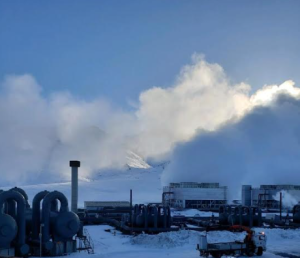 Geothermal energy. What is it? This type of energy, rather than being produced by the sun or an aspect of the climate, is actually produced by the earth. Deep beneath the surface of earth, “Magma heats nearby rocks and underground aquifers. Hot water can be released through geysers, hot springs, steam vents, underwater hydrothermal vents, and mud pots”, as described by National Geographic. Wells are used within the earth’s crust to access the heat provided by the mantle underneath the crust. This energy is not only used for electricity but also for heating as well. In some places in the world geothermal sources are also used as hot springs to swim and relax in.
Geothermal energy. What is it? This type of energy, rather than being produced by the sun or an aspect of the climate, is actually produced by the earth. Deep beneath the surface of earth, “Magma heats nearby rocks and underground aquifers. Hot water can be released through geysers, hot springs, steam vents, underwater hydrothermal vents, and mud pots”, as described by National Geographic. Wells are used within the earth’s crust to access the heat provided by the mantle underneath the crust. This energy is not only used for electricity but also for heating as well. In some places in the world geothermal sources are also used as hot springs to swim and relax in.
Iceland is popular for its use of geothermal energy for electricity, heating, and direct use by the country’s citizens as well as tourists. Some of the popular hot springs there are the Secret Lagoon, Blue Lagoon, and Sky Lagoon, but there are many other springs on the island that you can visit. Currently the United States generates the most power from geothermal energy, generating as much as 2,587 megawatts (MW) in 2020 according to Our World Data. The other two countries that are the highest producers of geothermal energy are Turkey at 1,613 MW and Iceland at 756 MW.
What are some of the benefits of geothermal energy? Well, first and foremost it is renewable energy. Part of the energy comes from the radioactive decay of elements, the other part of this renewable energy comes from the remnants of heat in the core of Earth from when it was first formed. According to Conserve Energy Future it also has “the smallest land footprint of any major energy source in the world”. This is because the energy comes from deep within the earth and does not cover a large expanse of land. It is also one of the cleanest energy sources out of all the renewable energy sources because it produces steam rather than greenhouse gas emissions.
Although geothermal energy has many benefits, there are also a few disadvantages to note such as that this type of energy is only located in certain areas of the planet. The interior of earth is not a homogenous layer of rocks, minerals, and geothermal activity. The amount of water reservoirs that are heated by earth’s interior is different around the planet. There may be more hot springs in Iceland than there are in England, it all depends on location. Conserve Energy Future also discusses how the construction of geothermal plants can also cause earthquakes because it may change the land around the plant. Geothermal plants are also typically very rural, so cities and large urban areas are less likely to be powered by geothermal energy.
There is a lot to still learn about renewable energies. The Office of Sustainability has a lot of information on local energy resources for anyone interested. They have a list of renewable energy companies that people may get in contact with as well as some home energy-efficiency resources. Hopefully this article has given you more insight on renewable energies. They are not perfect and there is always room for improvement, but they are making a positive impact on Earth and how we sustain our resources. If you enjoyed this article and would like to learn more follow GCI at our Instagram and Facebook pages.
